Volvo V60 Polestar Engineered
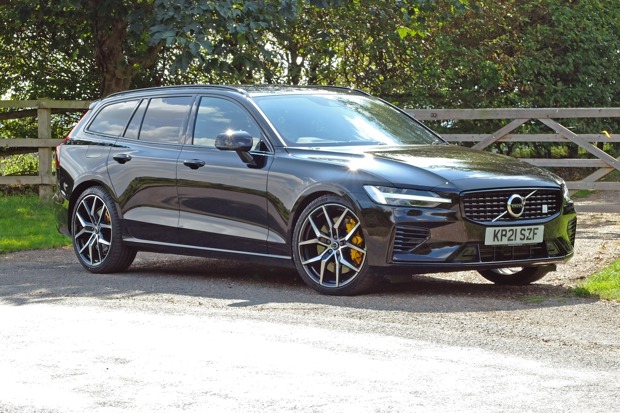

- The V60 Polestar Engineered - PHEV meets performance
- Does a PHEV cut it as a performance estate?
- Why the dull colour palette Volvo?
- The strange case of the silent V60...
- The parent-friendly features in the Volvo V60
- What is the electric range of the V60 Polestar?
- The Jekyll and Hyde sides of the V60 Polestar
- V60 Polestar Engineered meets the original V60 Polestar
- Fuel crisis? What fuel crisis?
- Volvo V60 Polestar Engineered vs BMW 330e Touring
- Will the next Volvo V60 be fully electric?
- We say adjö to our V60 Polestar Engineered
The V60 Polestar Engineered - PHEV meets performance
Replacing our Audi RS4 Avant, we've gone for another performance estate, but with a very different ethos.
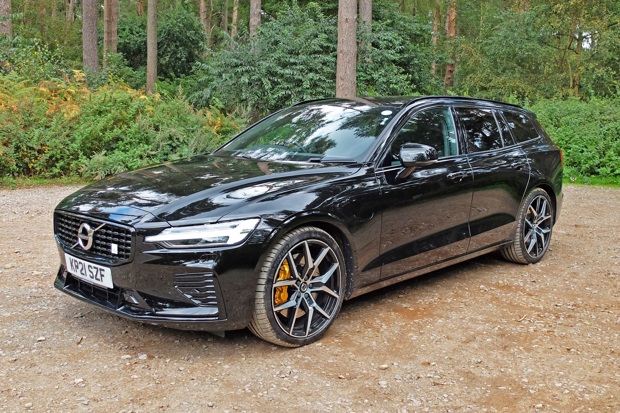
Date: 1 June 2021 | Current mileage: 1301 | Claimed economy: 128.4mpg | Actual economy: 40.1mpg
Saying goodbye to our Audi RS4 Avant was a sad day, especially as lockdown 2.0 meant we weren't able to do everything we planned with it, like trips to the continent. In fact, we struggled to really take it anywhere given the changes in the rules at the beginning of 2021. I will miss the green machine and its rapid performance.
The good news is that we're replacing it with another fast estate - only this one does things differently. The Volvo V60 T8 Polestar Engineered is Volvo's take on premium performance and intriguingly it's a PHEV. So instead of going for raw power from a big engine as rivals do, the V60 Polestar (which is what I'm going to call it from now on as its proper name is far too long) combines a smaller engine with an electric motor.
The engine in question is a 2.0-litre four-cylinder as opposed to six-cylinder units used by the competition. This has 318PS and 430Nm of torque so it's hardly slow on its own. But combine this with the electric motor and maximum power is boosted to 405PS with a hefty 670Nm of torque.
That's enough to propel this sensible family estate from 0-62mph in just 4.6 seconds making it a smidgen faster than the Mercedes-AMG C 43 Estate while the RS4 Avant does the same benchmark in 4.1 seconds.
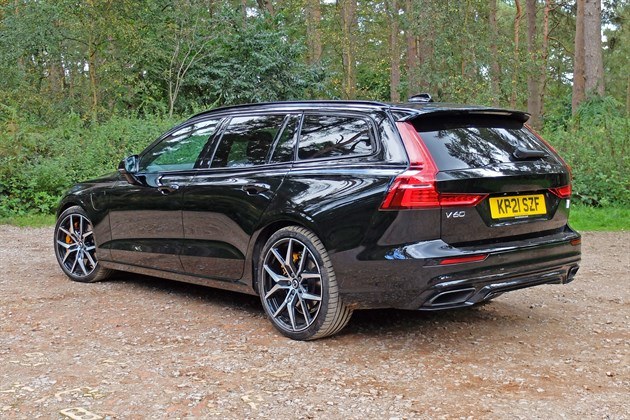
Yet the really big sell here is that along with all that performance, the V60 offers impressive economy. Because it's a PHEV, it has 25 miles of electric range when fully charged so on the school run I'm not dipping into the fuel tank at all as it runs purely on electric power.
The claimed figures say the V60 T8 will return on average between 113mpg and 128.4mpg although we'll be taking these numbers with a pinch of salt. However, on short journeys, we're seeing close to 90mpg on the trip. While the Audi RS4 Avant was very enjoyable to have for six months, the 20mpg fuel economy wasn't so good. So i'm looking forward to spending less time at petrol stations with the Volvo.
Emissions are also low at just 50g/km which means no extra first tax payment but with a list price of £52,200 (with options our car comes in at £57,870) you will be paying the extra showroom tax for five years.
As for our V60 Polestar Engineered, it will be our family transport for the next six months and with lockdown now easing, we may even get to take it further afield once again. And with a new baby due in a few months, the V60 will have its work cut out.
Does a PHEV cut it as a performance estate?
Volvo has gone down a different direction with its performance estate, going for a smaller engine and adding PHEV power. Does it work?
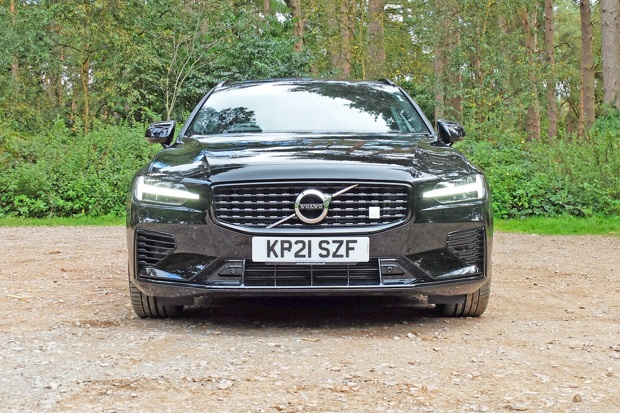
Date: 16 June 2021 | Current mileage: 1818 | Claimed economy: 128.4mpg | Actual economy: 39.1mpg
As a sort of halfway house between a conventional petrol car and a full blown electric vehicle, PHEVs are a gentle transition into the world of electrification. You get the range of a normal car but with much improved economy and lower emissions, yet you don't have to worry about running out of charge or sitting on the motorway services waiting for a charging point to become free.
Volvo has long offered PHEVs in its T8 models such as the XC90 and now the tech is available across the range - Volvo labelling them Volvo Recharge models (although confusingly the electric only XC40 also falls under the same umbrella).
But performance PHEVs are unusual, although with the planned ban on the sale of conventional petrol and diesel cars in 2030, it's something we're likely to see more of. Volkswagen has already put a toe in the water with its GTE models and the latest Touareg R is also plug-in hybrid only.
So perhaps it's no surprise to see Volvo putting a toe in the water by making its performance mid-size saloon and estate PHEV only. The question is, does it work? Well on paper, the V60 Polestar Engineered certainly ticks all the right boxes with more than 400PS and a 0-62mph time of 4.6 seconds. That's more than competitive with rivals.

What the V60 Polestar doesn't have is a decent soundtrack though. There is of course no noise on start up - this is a PHEV after all - but even when the petrol engine kicks in it's very muted, let alone anywhere near producing the noise you'd associate with a performance car. For me the sound is a crucial part of enjoying a car like this so I'm always left a little disappointed that there's not even a fake noise piped into the cabin.
What does offset this is the acceleration from a standstill. Thanks to that electric motor and a maximum torque figure of 670Nm, the V60 really shifts awway from the lights. It's not so good when you ask for acceleration from say 30mph or 40mph though (so for an overtake), it takes a second or so for the engine and electric motor to get in sync and although quick, it's not a particularly enjoyable experience.
The same goes for the steering. The V60 is pretty nimble and handles well, but the lifeless steering doesn't make for an engaging car and despite my best efforts to hustle it along a few quiet twisty roads, the V60 Polestar never feels that happy doing it.
That said, it's still early doors for our V60 Polestar Engineered and I'm already enjoying its effortless low down pace and the fact I don't have to keep filling it up with fuel every five minutes.
Why the dull colour palette Volvo?
While the majority of new cars on the roads tend to be muted colours, Volvo has really limited the colour choice of the V60 Polestar Engineered.

Date: 1 July 2021 | Current mileage: 2002 | Claimed economy: 128.4mpg | Actual economy: 40.1mpg
I've always liked vibrant coloured cars, or at least something unusual that stands out. Hence the Sonoma Green of the Audi RS4 Avant I ran previously. It started with my first car, a bright yellow Ford Fiesta and has continued ever since which explains why our family car is a Skoda Superb in Dragon Green.
So when it comes to long term test cars, being able to configure a car from scratch is a real pleasure. And more often than not it's the brightest colours that I go for. Except that is when there aren't any, as is the case with our V60 Polestar.
At the time I ordered our car, the colour choices included such exciting hues as Bright Silver, Crystal White, Osmium Grey and Black Stone. As you can see, I went for the latter although mainly because I find silver boring and white seems a bit passé these days.
Annoyingly since ordering, Volvo has ditched the Osmium Grey (which the Volvo XC60 we ran for six months came in) and added Thunder Grey, which I think is by far the best colour and reminds me of the grey I chose for our Skoda Octavia vRS.
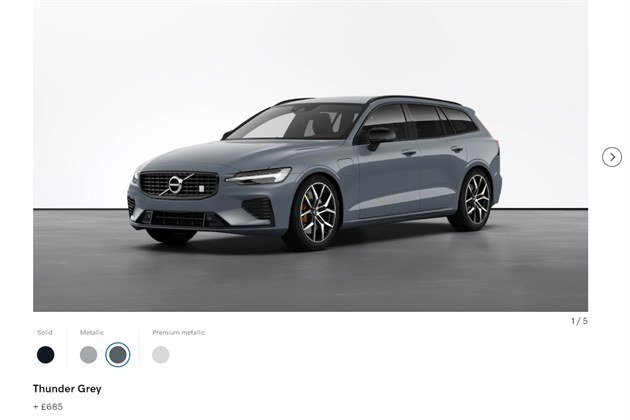
But what's odd is the lack of any exciting colours. I know most premium cars come in very muted colours - mainly greys and blacks - but you'd expect something with a performance edge to stand out a bit more.
I'm not asking for the colour palette from the 1975 British Leyland line-up, although who wouldn't say no to a mustard yellow Triumph Dolomite. But given this is a Polestar, I was hoping it would come in at least one colour that stood out.
What's more odd, go for an R Design, the trim that sits below the Polestar Engineered, and there's a whole host of colours including Fusion Red and Denim Blue. It would have been nice to had more choices with the Polestar variant, especially when the original model came in that trademark Polestar Blue.
Talking of colours, I love the yellow (almost gold) painted brake calipers on the V60 Polestar Engineered while my daughter thinks the yellow seatbelts are the most amazing thing she's ever seen in a car. So it seems even more odd that there would be this splash of colour but a dull choice for the rest...
The strange case of the silent V60...
We suffer our first issue with the V60 as an odd 'pop' noise results in no sound from anything at all...
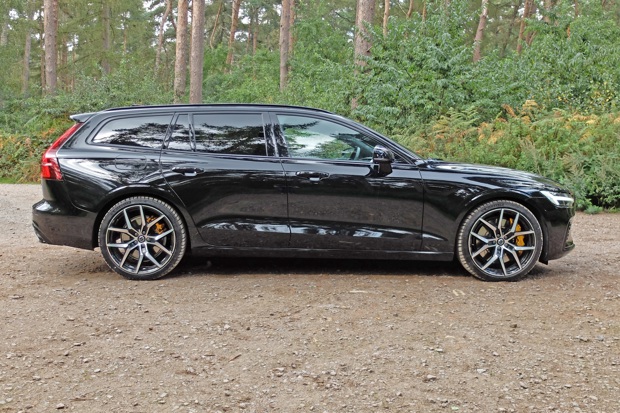
Date: 21 July 2021 | Current mileage: 2336 | Claimed economy: 128.4mpg | Actual economy: 40.1mpg
So there we are, me and my daughter, happily driving into town on a Saturday and listening to the soundtrack to Descendants 3 on Spotify. Yet again. If you're not familiar with the franchise that is Descendants then count yourself lucky, but as a short precis, it's a Disney+ made for TV film about hormonal teenagers. So obviously my six-year-old daughter loves it and knows all the songs by heart.
Tragically, through some form of osmosis or Guantanamo Bay style conditioning, I am now also very familiar with the Descendants soundtracks (yes plural). When I'm wide awake at 3am they now haunt my broken sleep. It has at least replaced that awful song by Chumbawamba which my brain sticks on repeat when it clearly hates me.
And just as my little girl is about to belt out the second chorus of the opening track - and my brain is making a note of the key change for future reference - there's a loud bang in the car. Followed by silence.
On the one hand this is a great result. But there's also the concerning element of a loud bang which is rarely a good noise, but especially not so in a car. My first thought is that something has hit the car, like the branch of a tree or perhaps someone has thrown something at us. Volvos being that well known hate figure.
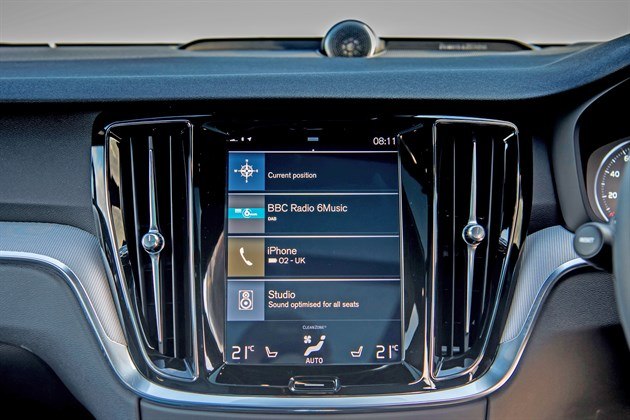
Fortunately we're right next to where we want to park, so I decide to just park up and check things over. Despite it being all of 30 seconds away the first question my daughter asks after 'what was that bang?' is of course 'where's the music gone?'.
At the same time I've indicated and noticed something - or rather the lack of something. Because there's no sound. Not just from Apple CarPlay and the radio, but the indicators. No satisfying clicking noise. I try the hazards and it's the same thing. The whole Volvo has taken a vow of silence and it's actually a little disconcerting.
Turning the car off and getting out wasn't accompanied by the usual bongs (every cloud) but I was already getting ready for the hassle of looking to see if a fuse had blown or having to get our car to a dealer for a check.
Thankfully the classic 'turn it off and on again' seemed to do the trick. And after a few hours in town, I started the car back up and everything worked as it should. The indicators had their click back and Apple CarPlay was once again operational so we could have more Descendants on the way back. The joy. Sadly the fault hasn't repeated itself since...
The parent-friendly features in the Volvo V60
Volvo has a longstanding reputation for safety and it makes the V60 a very family-friendly safe car.
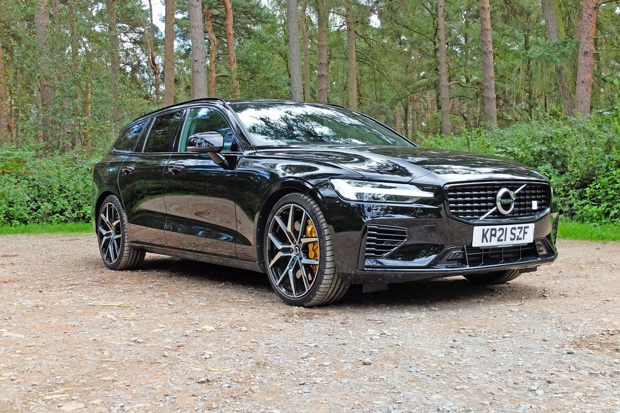
Date: 6 August 2021 | Current mileage: 2522 | Claimed economy: 128.4mpg | Actual economy: 40.1mpg
Having recently welcomed another small person to the world and now having three children to corral together, life can be a bit on the chaotic side. Especially when it comes to heading out somewhere in the car. Just getting out the door and on the road can take a good 15 minutes.
So having a practical and family-friendly car makes a big difference. As the Volvo V60 proves. It's not the biggest estate around - I do sometimes regret not going for a bigger V90 - but the V60 still proves a great car for families.
And it's the simple yet clever features which help. My favourite being the clever design of the rear headrests. Okay, headrests aren't something to get that excited about, but when you have child seats, they become an issue.
On most cars they have to be removed as they prevent the child car seat sitting flush. Not so in the Volvo. The clever design means that they are in line with the seat back and don't get in the way of car seats. One less thing to worry about.
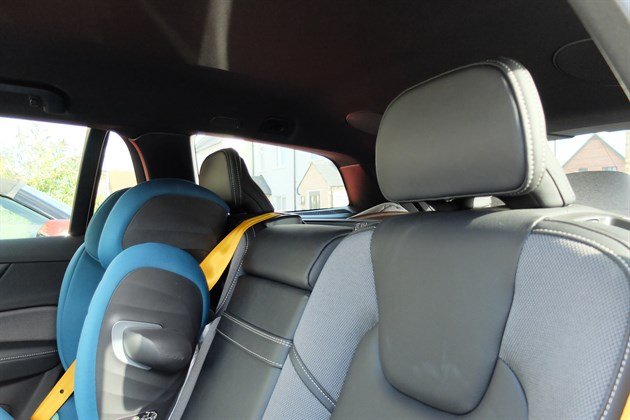
The V60 also has usefully large and Isofix guides with neat covers, making it easy to fit your car seats in. None of that messing around with gaps in the seat stitching that you find on some cars.
The one thing the V60 doesn't have sadly is the integrated booster seat - you need a V90, XC60 or XC90 for that. It's a great feature if you have older children so a shame it doesn't feature on our Volvo. Instead we're making do with a standard booster in the middle.
There are also no integrated sun blinds in the back - they're an option in the bigger V90 and XC90 though. What I was able to specify on the V60 was the £85 Power Child Locks which mean I can lock the rear doors and windows from the driver's seat and prevent them from being opened from the inside.
Perhaps the most annoying thing in the V60 is the fact the rear luggage cover doesn't retract when you open the tailgate. More often than not I forget to slide it down after putting our pushchair in the boot, only to be reminded when I get back in the driver's seat and look in my mirror. It's only a small thing, but irksome nonetheless.
What is the electric range of the V60 Polestar?
The V60 Polestar has the ability to run purely on electric power, meaning you can do the school run without using any fuel.
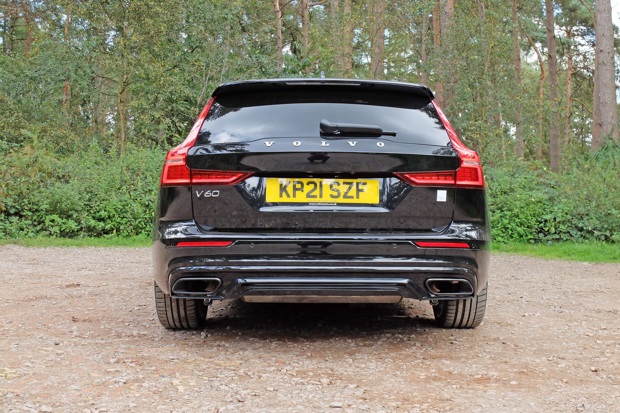
Date: 20 August 2021 | Current mileage: 2783 | Claimed economy: 128.4mpg | Actual economy: 45.1mpg
As a half way house between a combustion engined car and a proper EV, a PHEV certainly has its benefits. For starters there's the reassurance of the petrol engine when you need range. That's not to say that modern electric cars don't have long ranges - a Tesla Model 3 can cover more than 300 miles on a single charge.
But when that runs out you need to stop to charge it. And unlike putting fuel in a petrol car, that is not the work of five minutes. True, from a 120kW supercharger it's only half an hour, but unlike petrol stations, there's not one of those on every corner.
For us, a PHEV really works. During the week, we rarely use the petrol engine. The daily school run and trips into town, or to collect our 'big' shop can all be done on electric power. Simply stick the V60 Polestar in 'Pure' mode and it runs on battery alone - with things like the air con going into eco mode.
Strangely, the electric range actually increases to 28 miles when you choose 'Pure' mode over the standard 'Hybrid' setting, at 25 miles. It's pretty accurate too, so that 28 miles actually means 28 miles.
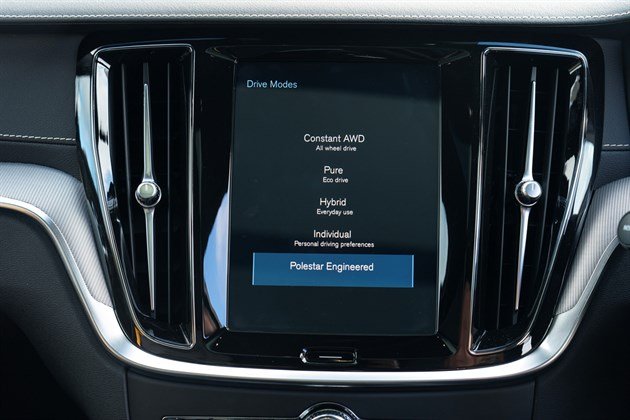
It doesn't sound that much but it's very useful for our kind of use - lots of short local journeys and the chance to charge it inbetween. Our friends are getting used to us asking if we can plug in our car when we visit.
Charging from a standard three-pin socket is pretty slow as you'd expect, but with only a small battery that's not really an issue. From completely flat, it takes around four and a half hours to max it at 100%. Plug it in and the Volvo will handily display the expected fully charged time.
You don't get the same performance in pure electric mode as in hybrid, but the V60 is no slouch either and it feels more than quick enough. Push the accelerator all the way down and the engine will kick in for extra power, but you rarely have to do that.
I've actually got so used to driving it in Pure mode that it's strange now when the petrol engine kicks in. The quiet and effortless acceleration in EV mode has become kind of addictive. With future Volvos being electrified, the transition will be an easy one for PHEV drivers.
The Jekyll and Hyde sides of the V60 Polestar
On the one hand the V60 Polestar Engineered wants to be a performance estate but on the other, it can't shake off its comfort-based roots.
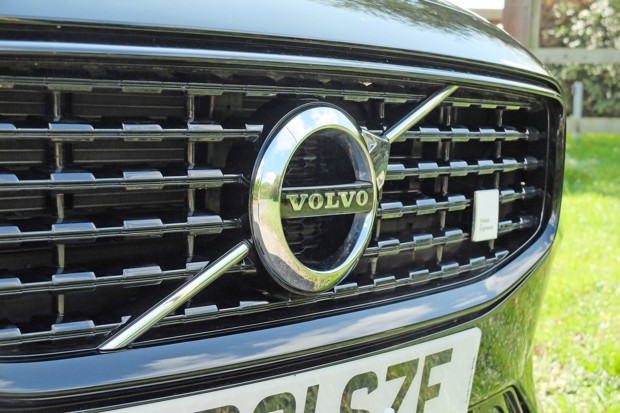
Date: 9 September 2021 | Current mileage: 3011 | Claimed economy: 128.4mpg | Actual economy: 45.1mpg
Volvo has always had a sensible reputation - one built around boxy estates and antiques dealers. If you had a Volvo in the 1970s chances are you were a Guardian reading herbivore. And to a large extent, that reputation persists - Volvos are still viewed by many as sensible and safe.
Sporty seems to come way down the list but Volvo has being knocking out performance estates for several decades now. The 850 T5 was a favourite with police forces in the 90s and the 850R has become a modern classic.
So the V60 Polestar Engineered is not a new venture for Volvo. But this is the first time it has gone down the PHEV route and despite lots of performance elements, the V60 still can't shake off its sensible roots.
It's certainly a car of contrasts. The refinement at low speeds and light steering are classic Volvo PHEV trademarks, but they're combined with a rock hard ride that's pretty uncomfortable most of the time. That ride does at least mean there's very good body control in bends.
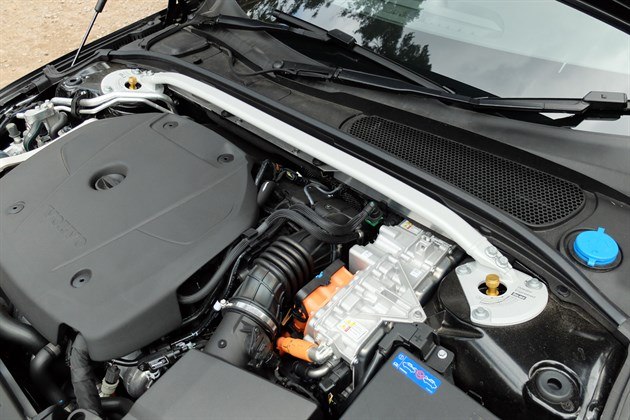
However, the steering doesn't feel at all sporty. There's a lack of weight and feel, so it's hard to tell what the front wheels and tyres are doing. The V60 always feels like it needs more steering input than a performance estate should when tackling corners which doesn't give you much confidence to really push it. Even in 'Polestar' mode, the steering still doesn't feel weighty or responsive enough.
Yet lift the bonnet (which we realise is a rare occurance these days) and there's a huge strut brace sitting across the engine block. Designed by Ohlins it's actually adjustable and designed to strengthen the front chassis, providing more stability during acceleration and extreme cornering. Even when cranked up the max all it does it further highlight the steering as a weak point.
It's frustrating as for me, the Volvo V60 Polestar is very close to being excellent, but as is often the case with performance estates like this, there are concessions to be made. This is a Volvo after all - and Volvo buyers expect a certain degree of comfort and ease of driving.
What is proving excellent is the fuel economy. True we're nowhere near the WLTP claimed figures but given the performance on tap, 45mpg+ is still impressive, especially when you compare that with competition like the Audi RS4 Avant.
V60 Polestar Engineered meets the original V60 Polestar
We spend a week with the original V60 Polestar to see just how Volvo's performance estate formula has changed.

Date: 23 September 2021 | Current mileage: 3230 | Claimed economy: 128.4mpg | Actual economy: 45.8mpg
I have to confess, I have a real soft spot for the original Volvo V60 Polestar. It's the kind of car that is not without its faults - and common sense would say buy something better - but I've always hankered after one. Yes the ride is awful but it has character, a facet which is increasingly rare in modern cars.
So I jumped at the chance to get back behind the wheel of one to compare it with our Volvo V60 Polestar Engineered. This was, at the time, the flagship in the Volvo V60 range and the first Volvo to wear the Polestar badge. Indeed it would have set you back circa £50k when it was launched in 2014.
Originally it had a six-cylinder turbocharged T6 engine with a twin-scroll turbo that produced 350PS. It wasn't actually that fast alongside the competition but it sounded great. In 2016 this was upgraded, Volvo replacing it with a 2.0-litre four-cylinder engine.
It doesn't sound as good (I prefer the 3.0-litre) but it does have more power with 367PS giving it a 0-62mph time of 4.8 seconds. And it's this one I'm driving (yes the pics here are a 3.0-litre but there was an incident with a dog and an SD card). It also comes in classic Polestar Blue, something not available on the new V60 Polestar Engineered sadly.

The one thing that stood out for me with the original V60 Polestar was how hard the ride was. And it's not improved over time. While I may complain about the firm ride of our V60 Polestar Engineered, it's postively cossetting compared to the rock hard set up in the original.
It's obviously not as quick as the T8 PHEV, but the performance builds nicely and it's an enjoyable car to drive when you push it a bit harder. The steering could do with more feel but I still prefer it to that of the current Polestar Engineered.
I kind of wish Volvo could combine both V60 Polestar cars. The original has the character and feel while the new one has the tech and performance. The 405PS and 670Nm torque of the V60 Polestar Engineered means it's far more rapid, especially away from a standstill.
Prices for the original V60 Polestar are still strong, you'll need around £25k although that does get the 3.0-litre engine, the newer 2.0-litre will set you back more like £30,000. A good investment? Well it's a rare car - at the time there are only 14 in the classifieds - and we think it will hold its value well.
Fuel crisis? What fuel crisis?
The V60's 30-mile electric range is proving a lifesaver as panic buying means no fuel to be found anywhere.

Date: 7 October 2021 | Current mileage: 3491 | Claimed economy: 128.4mpg | Actual economy: 46.4mpg
Nothing brings out the worst in the British public than a panic. As the last few weeks have proved. Despite they're not being an actual shortage of fuel in this country, there have been long queues at petrol stations which have subsequently run dry.
The real issue was (and remains) a shortage of HGV drivers. For decades now, professional HGV drivers have been underappreciated and underpaid for the stressful and difficult job they do. There was no shortage of fuel, but panic buying led to fuel stations running out of their usual supplies of petrol and diesel. Did we learn nothing from the toilet roll and pasta shortage of the first Covid lockdown? It seems not.
Not to be one to add to the mass hysteria, I avoided putting any fuel in either of our cars, despite both being on only a quarter tank, hopeful that it would all blow over sooner rather than later. We cut down to only essential travel (school runs and the supermarket shop) but it wasn't long before both cars were getting close to empty.
So we parked our diesel Skoda Superb Estate up and relied solely on the Volvo V60. Which thanks to its pure electric mode would give us 28 miles on a charge. Enough to get us around for those essential trips.

It soon became second nature to start our V60 Polestar Engineered and straight away put it into 'Pure' mode. This means it drives solely on electric power and also puts things like the air con into 'eco' mode to save battery.
So even though the petrol range was down to 20 miles, we could still use the 28 miles electric range without having to touch that. With most local petrol stations bereft of fuel (and any that did get some soon had huge queues), the V60 proved a real godsend for us.
While it's been pretty stressful, it's made us realise how few miles we do at a time. Like many people, Covid means me and my other half both work at home so we don't have a commute any longer, apart from my weekly drive to the railway station car park which is all of a 7 mile round trip. If the V60 was fully electric, we'd have no issues.
And for many people, owning a PHEV - and things like the fuel crisis - will prove that electric cars can work for them. It's almost a gentle step toward that 2030 deadline.
Volvo V60 Polestar Engineered vs BMW 330e Touring
We compare the V60 Polestar Engineered with another PHEV premium estate in the shape of the BMW 330e Touring. Which is the better buy?
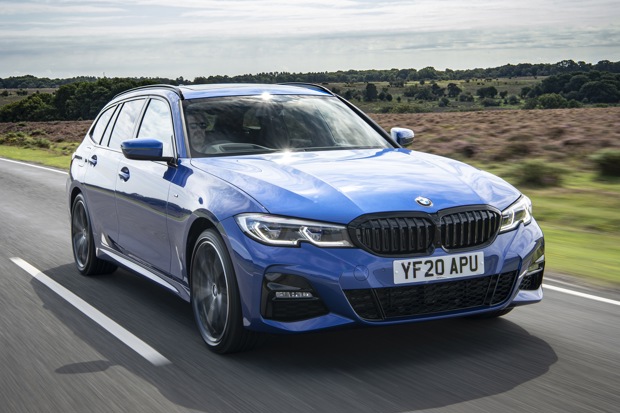
Date: 21 October 2021 | Current mileage: 3703 | Claimed economy: 128.4mpg | Actual economy: 46.8mpg
If you want a PHEV estate then the market is growing. We've recently seen Skoda launch a plug-in version of the Skoda Octavia to sit alongside the Skoda Superb PHEV. There's the Volkswagen Passat GTE while Mercedes has plug-in versions of both the C-Class and E-Class Estate. But perhaps the most popular is the BMW 330e Touring.
And it's this we thought would make a good comparison with our Volvo V60 Polestar Engineered. While prices start at £45,000, the top of the range BMW 330e xDrive M Sport Pro Edition Touring is £51,000 while also having one of the longest names around.
That puts it alongside the Volvo V60 Polestar Engineered which starts at £52,200, although ours with all the optional extras cost £57,000. Like the Volvo, the BMW is four-wheel drive for that money and comes with the M Sport bodykit so it certainly looks the part as the pictures show.
So what about power and performance? Well the BMW 'only' has 292PS in total compared to the whopping 405PS in the Volvo V60 so it's not as fast to 62mph. That said it's hardly slow, taking 5.8 seconds although the V60 is noticeably quicker, managing it in 4.6 seconds.

Where the Volvo can't compete with the BMW is in the handling stakes. While I really like the V60, I'm aware of its shortcomings - and the biggest of those is the handling, specifically the steering. The BMW on the other hand is exactly what you'd expect - the steering has a lovely weight and a more natural feel.
The 330e is also better in corners, giving you more confidence, especially when it's wet. The Volvo tends to feel tentative, whereas the BMW is all about reassurance. While it may not be as quick from a standstill, you can make quicker progress in the BMW thanks to more capable handling.
Both have top quality interiors though. The Volvo has better seats and I personally prefer the layout of the V60 but really there's little to choose between them here. It's the same when it comes to space and practicality - both have identical rear space and there's only 30 litres difference in boot space (in favour of the Volvo).
So which would I choose? While I think the BMW is the better car to drive, I like the rarity of the V60 Polestar Engineered. I see lots of 330e models around but in five months I've not seen another V60 Polestar Engineered. Plus it has yellow brake calipers. So there's that. But there is something about the V60's slightly leftfield approach that really appeals to me more than the BMW - and it's why I'd go for the Volvo.
Will the next Volvo V60 be fully electric?
Volvo was one of the first brands to commit to going electric, so will the next V60 be anything but?

Date: 11 November 2021 | Current mileage: 4111 | Claimed economy: 128.4mpg | Actual economy: 45.9mpg
In 2017, Volvo announced that every car it made from 2019 onwards would be fitted with an electric motor. It made big headlines at the time but as ever it's important to read a bit more detail. What 'electric motor' meant was that its range would include electric cars alongside plug-in hybrids and 'mild' hybrids - in other words petrols and diesels with electric assistance.
But with the UK Government planning to ban the sale of new petrol and diesel cars from 2030, the move to fully electric cars is now well underway. Volvo says its ambition is that 'around' 50% of the cars it sells will be pure electric by 2025, the other 50% to be hybrids. It will then switch to full electric in 2030.
So will the next Volvo V60 be electric only? Indeed will the Volvo V60 still exist then? With SUVs becoming ever more popular we've already seen traditional saloons fall by the way side and if proof were needed that the market has changed, Ford is axing the Mondeo in 2022 after 29 years in production.
Of course, premium estates are still extremely popular, with the BMW 3 Series Touring and Mercedes-Benz C-Class Estate both big sellers. But then so was the Mondeo 10 years ago...

Like most manufacturers, Volvo has chosen its SUVs as the first models to be fully electric - capitalising on their popularity. The first was the XC40 Recharge and next is the C40 Recharge (above) a coupe version of the XC40 which will be exclusively electric.
Earlier this year, Volvo unveiled the Concept Recharge (pictured top) which shows what the next generation of Volvo electric cars will look like - and interestingly it's an estate. Volvo it seems, still thinks the estate has a place. Which we're very happy about.
So expect to see the next V60 and V90 'take styling cues' from this concept, as they say. As it's an electric only car, the Concept Recharge doesn't have to worry about a conventional engine. Instead this is replaced with a full battery pack under the flat floor meaning a long wheelbase, more interior space and a low centre of gravity.
The current V60 is halfway through its lifespan, so we can expect to see the next generation model arriving in 2024. And if the concept car is anything to go by, it's going to be well worth the wait.
We say adjö to our V60 Polestar Engineered
After six months it's time to say goodbye to the Volvo V60 Polestar Engineered and look back on life with a performance PHEV.
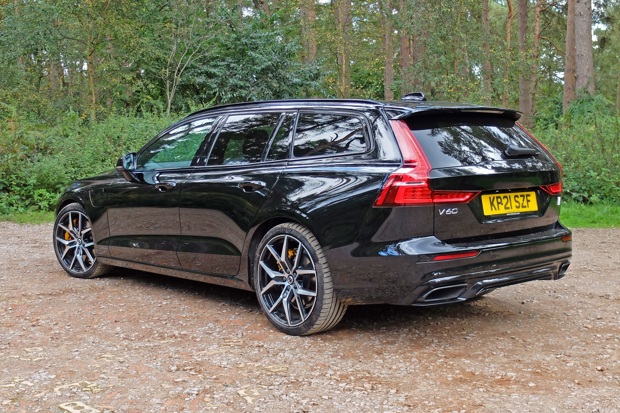
Date: 30 November 2021 | Current mileage: 4576 | Claimed economy: 128.4mpg | Actual economy: 46.2mpg
After six months we're saying goodbye to our Volvo V60 Polestar Engineered. The performance plug-in hybrid estate replaced the Audi RS4 Avant on our fleet so had some big shoes (or should that be tyres?) to fill.
On paper, the V60 it isn't that far off the RS4 Avant in terms of performance. It may have a smaller 2.0-litre engine but officially it will cover 0-62mph in 4.6 seconds - only half a second slower than the Audi. That is of course down to the extra power provided by electric motor.
What we've found over the past six months however, is that while the V60 Polestar Engineered it undoubtedly fast, it's real strength is its electric range. In Pure mode it can cover close to 30 miles, which became a lifesaver during September's ridiculous fuel crisis.
Like many others, Covid has meant a change to working from home - and a realisation that we really don't cover that many miles per journey. Indeed, the PHEV element of the V60 Polestar Engineered has been its standout feature - and the close to 50mpg is a far cry from the 25mpg we saw in the RS4 Avant.

It's also made us realise that the switch to an electric car is probably a lot easier than we first imagined. Most of our driving - tihngs like the school run, picking up our click and collect shopping or taking the kids to their swimming lesson, all cover less than 30 miles a time.
Given that the XC40 Recharge - currently Volvo's only full electric car - has a range of around 250 miles, we'd likely only have to actually charge it once a week. And while we do the odd longer journey to see family or go on holiday down to the west country, a bit of planning and finding charging stations en route won't make it much of a hardship.
I've enjoyed the smooth performance of the V60 Polestar Engineered, its excellent seats and the quality interior so while the firm ride isn't great overall it's been a very enjoyable six months with the performance Volvo estate.
Replacing it will be yet another sporty estate. This time in the shape of the new Skoda Octavia vRS Estate. I'm going back to a standard petrol engine this time I doubt it will be long before we're back in a plug-in hybrid.
